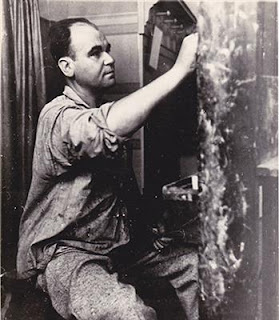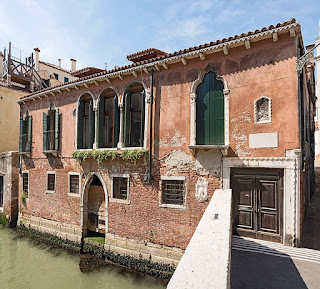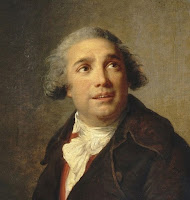Boy violinist who became a maestro of the baton
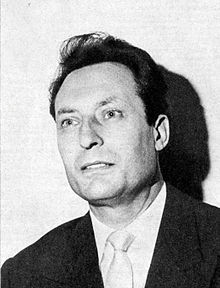 |
Giulini conducted some of the world's
great orchestras in a long career |
Carlo Maria Giulini, who conducted many of the world’s great orchestras in a career spanning 54 years, was born on this day in 1914 in Barletta, a town on the Adriatic coast 66km (41 miles) north of the port city of Bari.
Appointed musical director of
Teatro alla Scala in Milan in 1953, he went on to become one of the most celebrated conductors of orchestral performances, developing long associations with the Chicago Symphony Orchestra and the Philharmonia of London in particular, as well as the orchestra of the Royal Opera House, Covent Garden, the Vienna Symphony Orchestra and the Los Angeles Philharmonic.
He became renowned for projecting serene authority from the podium, as well as his selfless devotion to the score. A handsome man who was always impeccably tailored, he had a magisterial presence. Initially most recognised for the breadth and detail he brought to the operas of
Verdi and Mozart, he eventually became as well known for his orchestral repertoire.
Carlo Maria Giulini was born to a Neapolitan mother and a father from Lombardy. Although born in the south of Italy, he was raised in
Bolzano, which was part of Austria until 1915. For Christmas in 1919, when he was five, Giulini was given a violin and he progressed rapidly thanks to local instructors, notably a pharmacist who was also a violinist, whom he nicknamed Brahms.
 |
Giulini with his wife Marcella de Girolami, to whom
he was married for more than half a century |
When the distinguished Italian violinist and composer
Remy Principe gave a recital in Bolzano in 1928, he invited Giulini to study with him at Italy's foremost conservatory, the
Accademia Nazionale di Santa Cecilia in Rome. He soon won a place in the academy’s prestigious orchestra.
He played under such giants of conducting as Bruno Walter, Wilhelm Furtwängler, Richard Strauss, Igor Stravinsky, and Otto Klemperer. Giulini’s first public performance was the Brahms
Symphony No. 1 under Walter.
In 1940, Giulini won a competition with the prize of a chance to conduct the St. Cecilia orchestra. However, before the concert took place at which he was due to conduct, he was drafted into the Italian army and sent to the front in Croatia, in spite of being unequivocally opposed to
Benito Mussolini and a committed pacifist. He refused to fire his gun at human targets.
In 1942, on a 30-day break in
Rome, he married
Marcella de Girolami, his girlfriend since 1938. They would remain together until her death 53 years later.
 |
Giulini began his career mainly conducting
opera, first for the Rai radio orchestra |
In September 1943, the Armistice between Italy and Allied armed forces was signed, but the occupying Nazis refused to abandon Rome. When Giulini's Italian commander ordered his troops to fight on, Giulini went into hiding, living for nine months in a tunnel underneath a home owned by his wife's uncle, along with two friends and a Jewish family. There were posters around Rome showing his face with instructions that he be shot on sight.
After the Allies liberated Rome in June 1944, Giulini - one of the few conductors not tainted by associations with Fascism - was chosen to lead the Accademia's first post-Fascist concert, held in July 1944. On the programme was the Brahms
Symphony No. 4, which would become almost his signature work, one that he conducted 180 times over the course of his career.
In 1948, Giulini conducted his first opera, a production of Verdi’s
La Traviata for Italian radio, before conducting his first theatre production of the same opera in Bergamo in 1950.
After hearing Giulini’s radio broadcast of Debussy's
La mer, the great conductor
Arturo Toscanini asked to meet Giulini and recommended him to be musical director at La Scala. He took up the post in 1953, although in the event he resigned after members of the audience jeered Maria Callas during a run of operas in 1956.
In 1958, Giulini conducted a highly acclaimed production of Verdi's
Don Carlos at the Royal Opera House in London - directed by
Luchino Visconti - and although he returned to Covent Garden several more times, and to other venues in Europe, he became so disillusioned with some of the modern visual interpretations of classic works that he effectively quit opera in 1965 to concentrate on orchestral works. Even the Metropolitan Opera in New York could not persuade him to change his mind.
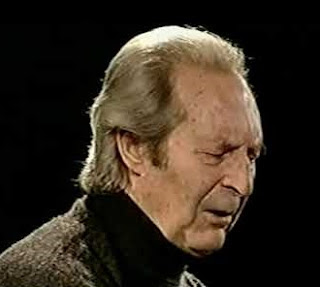 |
Giulini, who worked into his 80s, had a long association
with the Chicago Symphony Orchestra |
In 1955 he made his American debut with the Chicago Symphony Orchestra, leading to a 23-year association with the orchestra, of which he was principal guest conductor from 1969 to 1972 and continued to appear with them regularly until 1978. In 1956, he began his association with the Philharmonia of London.
In addition to his role in Chicago, he was music director of the Vienna Symphony from 1973 to 1976. From 1978 to 1984, he served as principal conductor and music director of the Los Angeles Philharmonic, launching his tenure there with performances of Beethoven's
9th Symphony.
In addition to being in great demand as a guest conductor of major orchestras around the world, Giulini made numerous recordings with the Philharmonia in London.
Two Mozart recordings,
Don Giovanni and
Le Nozze Di Figaro, brilliantly produced by Walter Legge, were recalled as exceptional. The recordings that followed during the early 1960s reflected a London concert repertory that included music by Schubert, Brahms, Dvorak, Tchaikovsky, Debussy and Ravel, as well as brilliant
Rossini overtures and memorable performances of the Verdi
Requiem.
Giulini often said that he found the public role of being a conductor uncomfortable and that ideally he would prefer to do no publicity at all. Yet he had an eccentric side that appeared to enjoy fame, to the extent that during his time in Los Angeles he would sometimes be spotted driving around in an open-top Mercedes, wearing sunglasses, a flowing scarf and a large hat that could scarcely fail to get him noticed.
His later years in America were marred somewhat by the ill health and eventual death of his wife in 1995, not long after which, in 1998, he announced his retirement, returning to Italy and living in the area around
Brescia in Lombardy, where he died in 2005 at the age of 91.
 |
The city of Bolzano is set against a backdrop of
stunning Alpine views |
Travel tip:
Bolzano, where Giulini grew up, is a city in the South Tyrol province of northern Italy, also known as Alto Adige. It is in a valley amid hilly vineyards. A gateway to the Dolomites mountain range in the Italian Alps, it has a medieval city centre, where can be found wooden market stalls are laid out with Alpine cheese, ham and dark, seeded loaves. Bolzano us the home of the South Tyrol Museum of Archaeology, which features a Neolithic mummy called Ötzi the Iceman. Nearby is the imposing 13th-century Mareccio Castle, and the Duomo di Bolzano with its Romanesque and Gothic architecture.
 |
The beautiful 14th century Basilica di Santa
Maria Maggiore in Barletta |
Travel tip:
Giulini’s home town of Barletta is a working port with modern suburbs and an attractive historic centre, where one of the most famous sights is an ancient bronze 'Colossus', thought to be the oldest surviving bronze Roman statue. The identity of the figure the statue represents is not clear but one theory is that it is the Byzantine Emperor Marcian and that the statue’s original home was in Constantinople. Barletta has a beautiful 12th century cathedral, renovated in the 14th century, the Basilica of Santa Maria Maggiore.
More reading:
How a chance opportunity changed conductor Arturo Toscanini's life
The life of the passionate maestro Riccardo Muti
Why Luchino Visconti was known as the aristocrat of Italian cinema
Also on this day:
1740: The birth of composer Giovanni Paisello
1946: Italy's King Victor Emmanuel III abdicates
2013: The death of fashion designer Ottavio Missoni
Home








